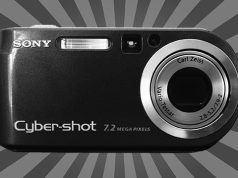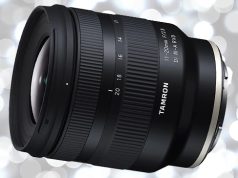
By definition, an advanced enthusiast DSLR provides the features, performance, image quality and pride of ownership that satisfies the needs, demands and desires of professional and serious enthusiast photographers. This sophisticated group is knowledgeable and passionate about photography, and creates images for commercial purposes or as a means of creative expression.
Technically a DSLR is a “through-the-lens-viewing” camera. An angled mirror behind its lens reflects the image formed by the lens up into an optical viewfinder for viewing, moving out of the light path at the instant of exposure. Strictly speaking, none of the cameras here using an electronic viewfinder (EVF) instead of an optical viewfinder (OVF) are really an SLR or a DSLR. However, over the past few years the marketplace and consumers have decided this rigorous definition no longer applies.
With vast improvements in color fidelity, viewing performance and refresh rates, the best EVF cameras now provide a true DSLR shooting experience along with, in many cases, a DSLR form factor and controls. In other words, all the cameras covered here compete in the same market, and that’s what matters to consumers and dealers.
Key features advanced shooters look for in making their choices are: high-resolution sensors; responsive high-performance AF and AE systems; state-of-the-art Full HD or 4K video capture with stereo sound and level adjustments; high-res articulated LCDs and brilliant EVFs; robust, weather-sealed body construction; cool (retro or contemporary classic) form factors; and Wi-Fi connectivity that provides remote shooting, viewing and sharing capability via a smartphone, tablet or PC.
We hope that perusing the specs and features of the latest crop of advanced enthusiast DSLRs described here will give you greater insight into what motivates this dedicated, passionate market segment. As savvy dealers are well aware, advanced enthusiasts and emerging pros are worth cultivating because they tend to be repeat customers who buy high-end cameras, lenses and accessories. Like you, they’re in it for the long haul.
Advanced Enthusiast DSLR Roundup 2014
Sony Alpha a7R. This classically styled, compact E-mount DSLR incorporates an advanced set of features clearly aimed at attracting serious enthusiasts and pros into the Sony fold. With an ultra-high-res, 36.4 megapixel, full-frame Exmor CMOS sensor coupled to Sony’s highest tech Bionz X image processor, the a7R dispenses with an optical low-pass, anti-aliasing filter and incorporates Sony’s gapless on-chip lens design to deliver superior image quality. It also provides a 2.4M-dot OLED electronic viewfinder, a tilting 3.0-inch 1,299K-dot TFT LCD monitor and a multi-interface shoe to expand flash options. Other key features include: Full 1080p video capture at 24p/60i/60p with remote capture capability; built in Wi-Fi and NFC connectivity; eye AF control; a Quick Navi direct access interface; ISO 100–25,600; and a maximum, full-res 4-frames-per-sec burst rate. $2,299.99*.
Those seeking a similar camera but with 4K video capture and much higher ISO settings for low-light performance should consider the Sony Alpha a7S. $2,499.99. sony.com
Canon EOS 7D Mark II. This brand-new successor to the acclaimed EOS 7D is destined for stardom among pros and advanced enthusiasts because it delivers “the 5D Mark III experience” in a beautifully balanced, more compact package at a substantially lower price. It has a new, upgraded 20.2MP APS-C CMOS sensor coupled to dual Digic 6 image processors that deliver, among other things, a sizzling 10-fps, full-res burst rate and Full HD 1080p video capture at 60 fps with movie servo AF and Dual Pixel CMOS AF technology with live view.
It also provides: a 3.0-inch, 1.04M-dot Clear View II LCD monitor; a new 65-point all-cross-sensor AF system for superior focusing with a wider variety of subjects; a built-in GPS receiver and digital compass; and a native ISO of 16,000 with settings to ISO 51,200. The 7D Mark II retains the 7D’s robust magnesium alloy body, and its brilliant 100%-coverage optical viewfinder still sets the standard for brightness and clarity for APS-C-format DSLRs. $1,799. usa.canon.com
Nikon D750. Sliding neatly in between the established Nikon D610 and D810 in Nikon’s enthusiast/pro full-frame DSLR lineup, the just-announced D750 has what it takes to contend in this competitive neighborhood. Based on a full-frame, 24.3MP FX-format CMOS sensor paired with an advanced Expeed 4 image processor, it delivers continuous, full-res bursts of 6.5 fps, Full HD 1080p video recording at 60/30/24p and a native ISO range of 100–12,800 that’s expandable to ISO 51,200.
It also features: a 3.2-inch, 1,229K-dot vari-angle LCD monitor; a 51-point AF system with 15 cross-type sensors for fast, precise autofocus for a wide variety of subjects; a 91,000-pixel RGB exposure sensor for enhanced metering precision; and group area AF that enables focus tracking with fast-moving subjects. The D750 provides built-in Wi-Fi connectivity for easy sharing and remote operation with enabled devices, as well as time-lapse shooting, customizable picture controls and exposure smoothing functions for expanded in-camera creative options. $2,299.95. nikonusa.com
Leica T. This attractively minimalist compact system camera from Leica is beautifully made and gorgeously finished (in traditional black or striking white), as you would expect. It lacks the usual array of buttons and dials, being controlled entirely via the big 3.7-inch, 1.3M-dot TFT LCD touch screen. It incorporates a 16.5MP APS-C CMOS sensor, an advanced contrast-based AF system, and it can capture Full HD 1080p video at 30 fps or shoot continuous, full-res images at 5 fps. Its robust body is built on a solid unibody design, precision machined from a solid billet of aluminum. It also features: a powerful built-in flash; 16GB of internal memory; Wi-Fi connectivity for easy sharing and remote operation using the free Leica T app for iOS; and a downloadable copy of Adobe Photoshop Lightroom.
Among the chief attractions of this camera are the legendary Leica lenses specifically designed for it. Currently, there are four: the Vario-Elmar-T 18–56mm f/3.5–5.6 Asph; the Leica APO-Vario-Elmar-T 55–135mm f/3.5–4.5 Asph; the Super-Vario-Elmar-T 11–23mm f/3.5–4.5 Asph; and the Summicron-T 23mm f/2 Asph. $1,849. us.leica-camera.com
Olympus OM-D E-M1. The flagship of the Olympus Micro Four Thirds system has the same downsized, classic DSLR look as the landmark EM-5. But its real-world performance is notably enhanced thanks to an upgraded 16.3MP Live MOS sensor and a TruePic VII processor that provides increased responsiveness, enhanced image quality and improved performance at high sensitivity settings to ISO 25,600. Its larger, higher magnification, 2.36M-dot EVF provides a 100% view. Plus it features: a 3.0-inch, 1,037K-dot, tilting touch-screen OLED monitor; a Dual Fast AF system with 81 contrast-detection zones plus 37 phase-detection zones; full-res bursts with AF at 10 fps; and an innovative 5-axis sensor-shift image-stabilization system that delivers shake-free images when shooting stills or 1,920×1080 Full HD video handheld. Its built-in wireless connectivity links to iOS/Android devices using a QR code. The E-M1 also offers an enhanced, customizable multifunction control array similar to that in pro DSLRs. And all this is built into a dustproof, weatherproof, freezeproof magnesium alloy body. A stunning new chrome-finished version debuted at photokina 2014. $1,399.99. olympusamerica.com
Pentax K-3. The top-of-the-line K-3 takes the classic Pentax K line to a higher level with an upgraded 24MP APS-C-format CMOS sensor. Its ingenious user-selectable floating image sensor mechanism emulates the effect of an optical antialiasing filter, giving users the choice to leave it off for superior resolution and detail capture or turn it on to eliminate moiré. Other significant enthusiast-aimed upgrades are: a SAFOX AE/AF system with 27 cross-type AF points and an 86K RGB AE sensor that provides superior subject identification to enhance AF accuracy; an 8.3-fps, full-res burst rate; multi-pattern auto white balance; dual SD card slots; and a 3.2-inch, 1037K LCD. A sensor-based Shake Reduction (SR) system is said to provide a four-stop advantage in handheld shooting.
Support for smartphone and PC connectivity is included, and remote shutter release, viewing and importing of images are possible with a Pentax Edition Flucard. Legacy features include a top shutter speed of 1/8,000 sec; Full HD 1080p video; an external mike jack; HDMI output; and a fully sealed, weather-resistant magnesium alloy body. $1,099.95. ricohimaging.com
Panasonic Lumix DMC-GH4. This brilliant, upgraded top-of-the-line Micro Four Thirds model provides the full DSLR shooting experience and form factor along with 4K 4,096×2,160 video capture at 24 fps, QFHD 4K 3,840×2,160 capture at 30/24p and Full HD at up to 60p. It utilizes a 16.05MP Live MOS sensor and a cutting-edge 4-CPU Venus engine image processor that enables a full-res burst rate up to an impressive 40 fps. It also features: a 2,359K-dot OLED EVF; a 3.0-inch, 1,036K-dot OLED touch-screen monitor; and a high-speed, 49-area contrast-detection AF system that integrates with a Depth from Defocus technology system.
Like its predecessor, the GH4 provides full area and pinpoint AF, auto HDR for still photos, electronic front and rear shutters, a built-in level, Wi-Fi/NFC connectivity, and slow motion video modes. A revised ergonomic button layout improves operational speed and convenience, and all these features are housed in a tough, lightweight, weather-sealed magnesium alloy body. $1,699.99. panasonic.com
Samsung NX1. Samsung’s sleek, new NX-mount CSC offers a combination of understated DSLR styling plus an impressive enthusiast-aimed feature set that should delight pros and serious shooters seeking high performance and value. It provides a 28.2MP APS-C-format CMOS sensor coupled to an advanced DRIMe V processor, a 3.0-inch, 1,036K-dot AMOLED tilt/touch-screen monitor and an ultra-high-res 2,360K-dot XGA OLED EVF.
The biggest news of all: it can capture 4K video at 24 fps, UHD video at 30 fps and has a full-res burst rate of 15 fps complete with autofocus. The NX1 also features: an ISO range of 100–51,200; a new hybrid AF system that combines phase-detection and contrast-detection AF using 205 phase-detection AF points; dual-channel Wi-Fi and NFC connectivity along with Bluetooth 3.0 to connect with smartphones and other devices; and a USB 3.0 port. $1,499.99. samsung.com
Fujifilm X-T1. This new, rugged, minimalist-style DSLR is the flagship of Fujifilm’s impressive X series. It features a proprietary 16.3MP APS-C X-Trans CMOS II sensor, claimed to deliver superior image quality and lower noise than conventional sensors, and it’s married to an advanced EXR II processor built to deliver a continuous burst rate of 8 fps and Full HD 1080p video capture at 60 fps. The X-T1 also provides a 0.5-inch, 2,360K-dot, 0.77x OLED EVF and a tilting 3.0-inch 1,040K-dot LCD monitor. Its intelligent hybrid AF system combines contrast- and phase-detection sensors in a 49-point matrix and has a focus-peaking display for precise focus assessment and enhanced manual focus capability.
Other key features include: built-in Wi-Fi connectivity for easy sharing and remote operation via coupled devices; ISO 100–51,200; electronic and mechanical shutter with speeds 1/4,000 sec; and weather-resistant body. The camera comes complete with a shoe-mount Fujifilm EF-X8 flash unit. $1,299. fujifilmusa.com
*All prices are body only.





